

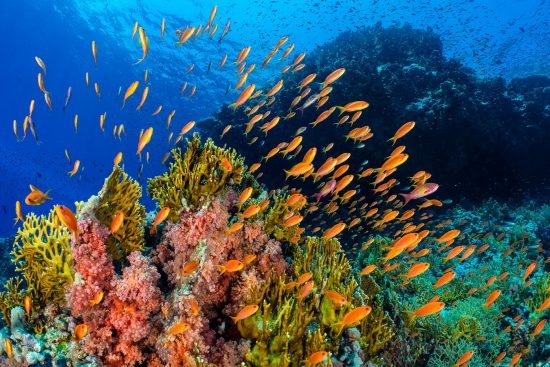
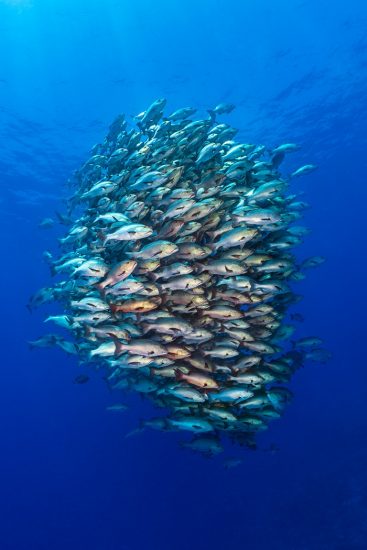
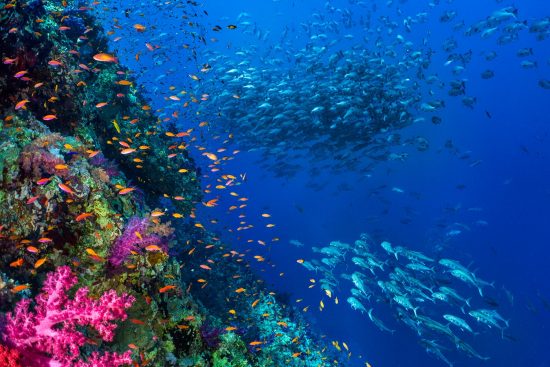
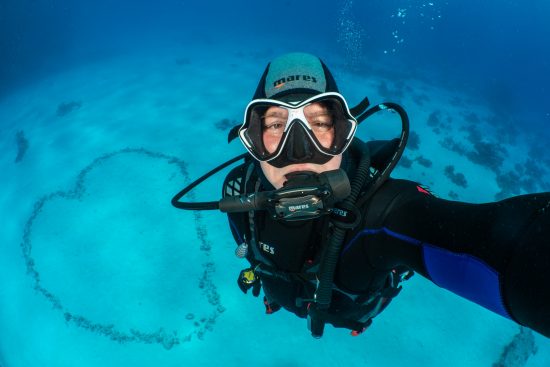
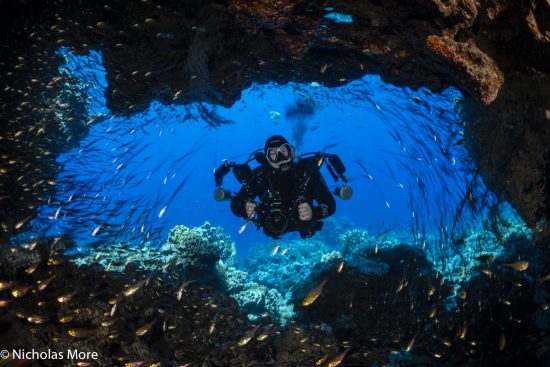
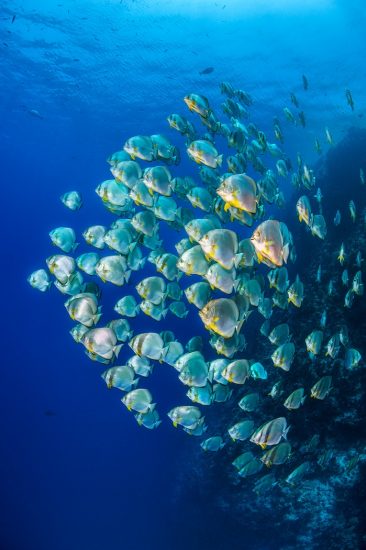
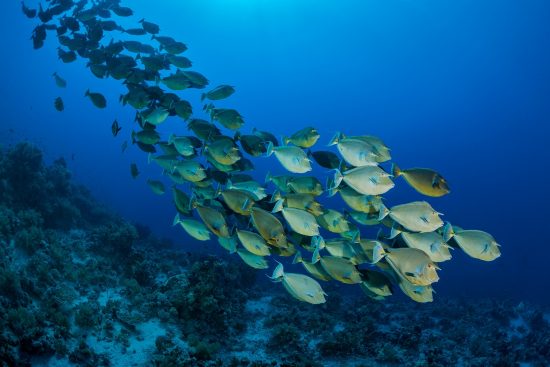
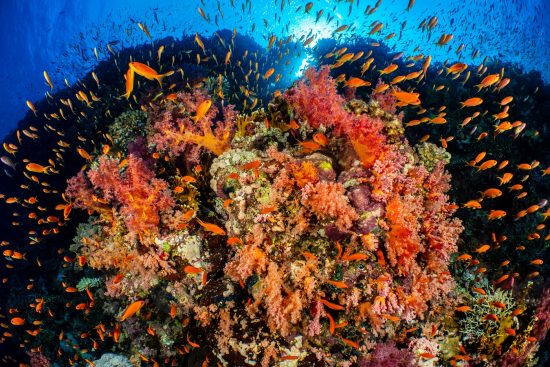
We tend to think of coral seas as being close to the equator and therefore changing little through the year. The Red Sea, especially the northern Red Sea, is a decent distance north and therefore experiences big changes through the seasons. I time my trips to Sinai for the start of summer, heading there around the end of June. It's prime time because the sea is warming up nicely and so are the lives of cold-blooded fish.
Cold-blooded is a misleading term, the scientific word 'ectotherm' isn’t in common use, but it does more clearly communicate that their bodies aren’t actually cold. Ectothermic animals simply don’t waste energy heating themselves up and instead the environment determines their body temperature. This means that the ambient temperature has a massive impact on their lives. If you think that your mood lifts when winter turns to summer, imagine what it must be like for cold blooded creatures.
In the Red Sea, the onset of summer means that the lives of the resident fish click into top gear with a flurry of spawning. The most photogenic consequence of this is that many of the larger species, which are usually solitary, gather in impressive aggregations at landmark dive sites. The most famous of these is in the Ras Mohammed National Park at the tip of the Sinai peninsular, and is a major photographic target for me. Key species that can be seen in impressive numbers include bohar snappers, giant trevallies, bluespine unicornfish, bigeye jacks, yellow-dotted trevallies, circular batfish, longnose parrotfish, barracuda and more.
In late June, the Egyptian desert is heating up and it is getting very warm on land. The sea takes longer to heat and registered a pleasant 26˚°C on my Genius computer, so it remains surprisingly comfortable at sea. This temperature sees me in a Flexa 5/4 suit because I am planning to spend over 50 hours in the water on this trip! This is such a comfortable suit and warm too – especially when we venture over into the start of the Gulf of Suez with cooler water. I also used my Magellan travel friendly BC, my Volo Race full foot fins that are getting towards the end of their life after hundreds of dives, and my SXS 62X regulator that is so good and so light. I love how lightweight this reg is when I check in my bags, but also how light it is in my mouth when diving. You have to try it, if you haven’t.
While the summer schools are a massive draw, the fact that they gather at Ras Mohammed is a major bonus, because even without the schools this is a spectacularly beautiful reef. I have been diving and photographing here regularly for decades and I do think that the reef has never looked more beautiful than in the last 5 years. My theory is that this is because Ras Mohammed definitely gets less divers these days – because the multipurpose day boats coming out of Sharm, that are loaded with a mix of swimmers, snorkellers and divers, no longer visit as snorkelling is no longer allowed. I think the site now sees less inexperienced divers and this shows in the scenery. Whatever the reason, diving at Ras Mohammed at the start of summer is phenomenal.
 Alex
Alex 30th August 2023
30th August 2023